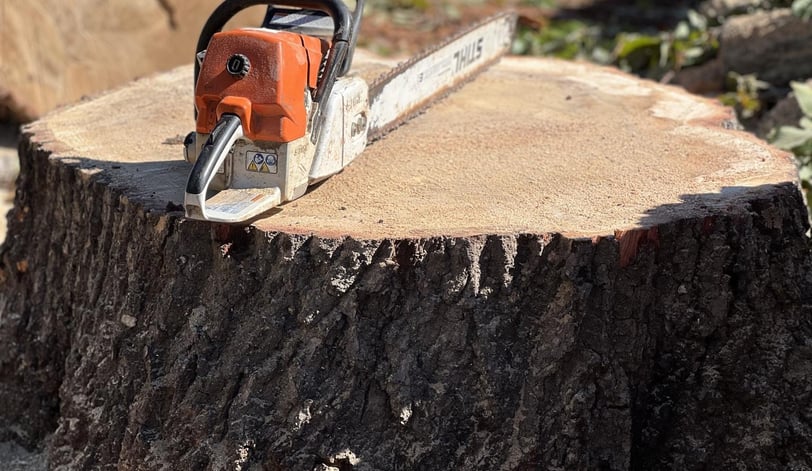The Best Ways to Safely Fell a Tree: A Comprehensive Guide
Check out this Comprehensive guide for a better understanding of how to safely fell a tree. Keeping you and you loved ones safe is the number one priority when performing tree work.
2/12/20252 min read


Understanding Tree Felling
Felling a tree might seem like a straightforward task, yet it requires careful planning and execution to ensure safety. Whether you're a professional arborist or a homeowner tasked with managing your yard, understanding the best practices for tree felling is crucial. This comprehensive guide will provide insights into the safest methods for felling trees while minimizing risks to yourself and your surroundings.
Preparation Before Felling a Tree
Before even touching your chainsaw, preparation is the key to safe tree felling. Start by assessing the area surrounding the tree. Identify any potential hazards such as power lines, buildings, or other trees that may obstruct your work. Additionally, evaluate the tree itself — check for signs of decay, leaning, or disease, all of which can affect its fall direction.
Once you've done your assessment, plan your escape route. This route should ideally be at a 45-degree angle away from the direction in which you intend the tree to fall. Ensuring that your path is clear of obstacles will allow for a rapid exit if the situation becomes unsafe.
Using Proper Techniques for Safe Felling
Executing the felling itself should be approached methodically. The first step is to make the notch cut on the side of the tree facing the desired fall direction. This notch should consist of two cuts: a horizontal cut that goes about one-third into the tree and an angled cut that meets the horizontal cut at around a 70-degree angle. This notch helps guide the tree as it falls.
After making the notch, proceed to the back cut, which is made directly opposite the notch. This cut should be slightly above the horizontal cut of the notch. It is vital to leave sufficient wood to create a 'hinge,' which will control the fall of the tree.
As you start the back cut, remain vigilant for signs that the tree is about to fall. Listen for cracking sounds, watch for the movement of the tree, and get ready to move quickly along your escape route if necessary. Remember, tree felling is not just about cutting; it requires awareness of the environment and quick decision-making.
Post-Felling Safety Precautions
After the tree has been felled, it’s important to assess any damage done during the process. Check for any hanging limbs or branches that may pose a risk and remove them safely with appropriate tools. Additionally, if the tree was large, consider the need for professional help to handle the subsequent cleanup and disposal, as it can be hazardous and labor-intensive.
In conclusion, felling a tree safely involves meticulous preparation, proper cutting techniques, and post-felling inspection. By adhering to these guidelines, you can protect yourself and those around you while effectively managing the trees in your environment. Always remember that when in doubt, consulting with or hiring a professional arborist is the safest option.
Contact US FOR a free estimate
StormValleyTreeService@Gmail.com
828-816-0792
© 2024. All rights reserved
